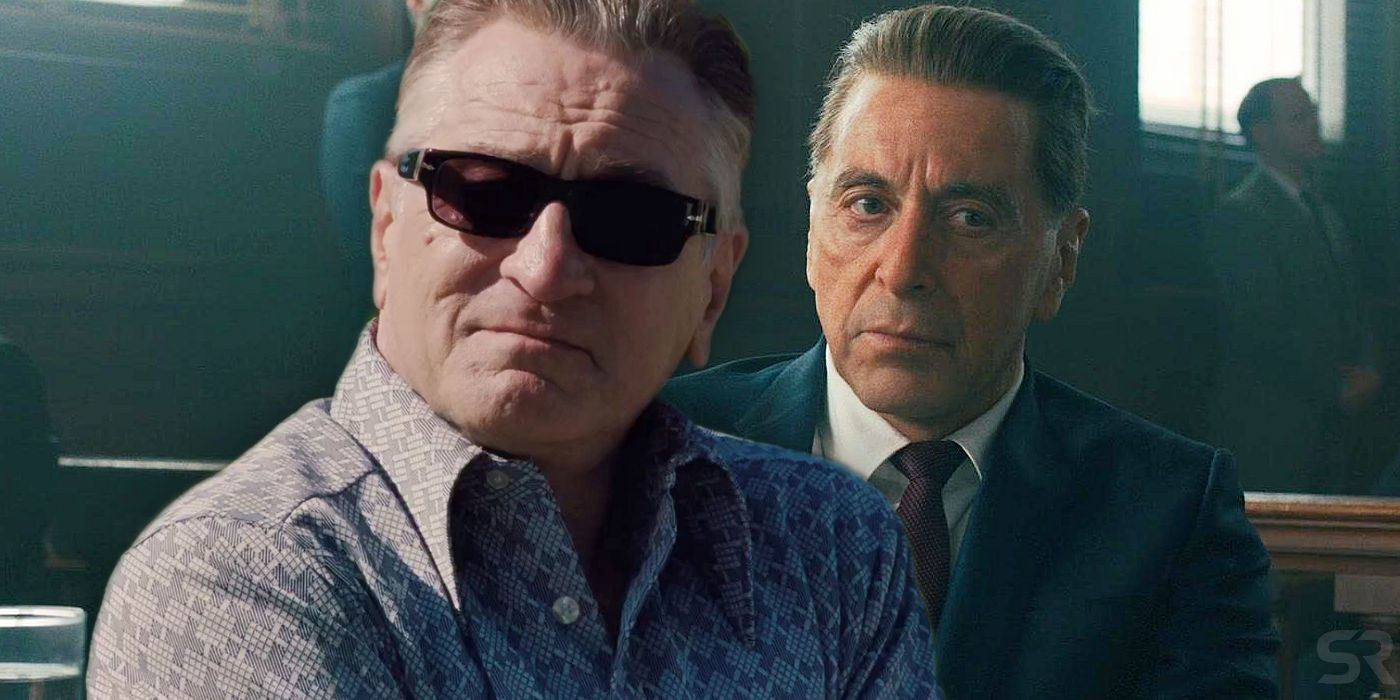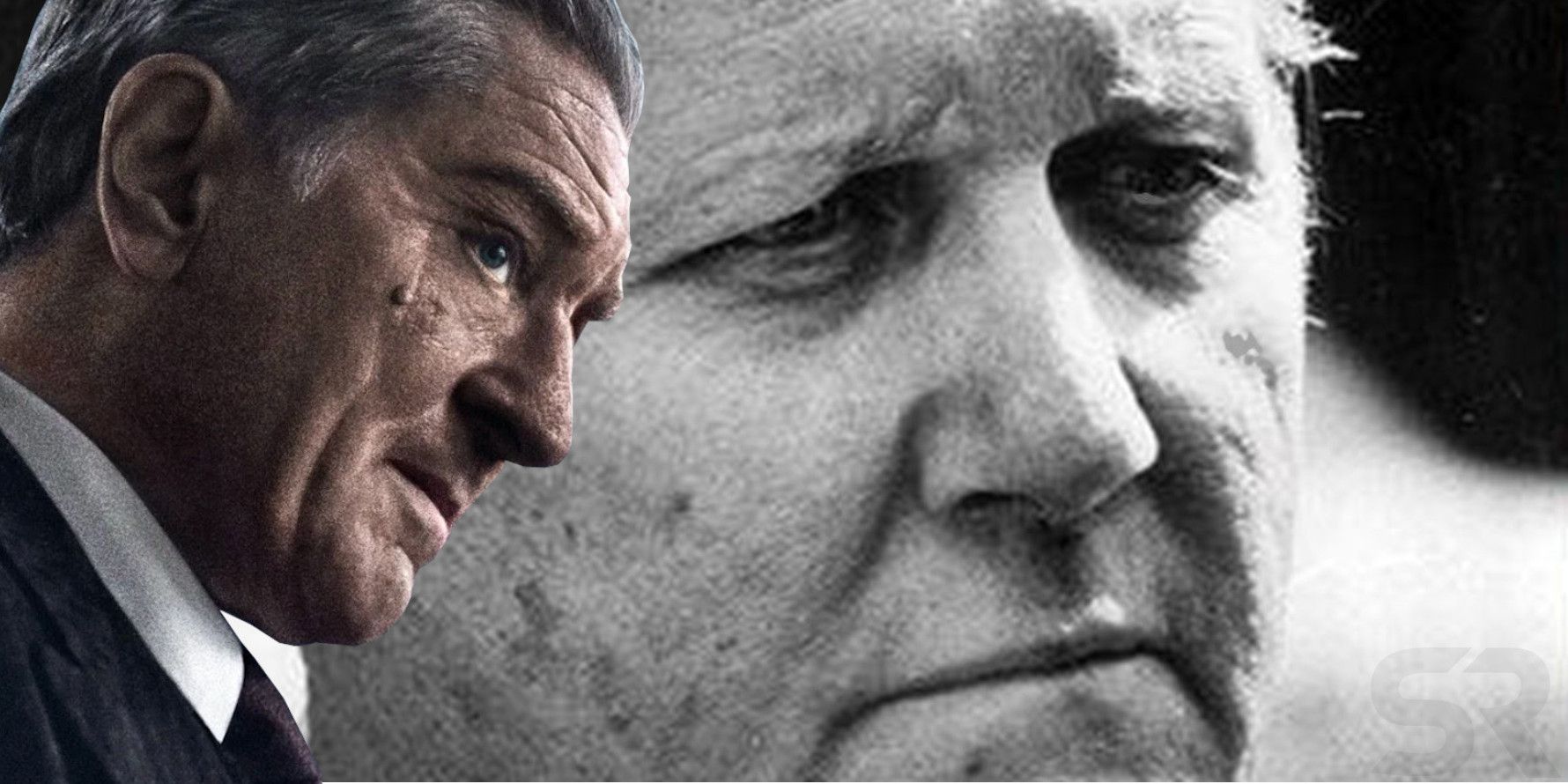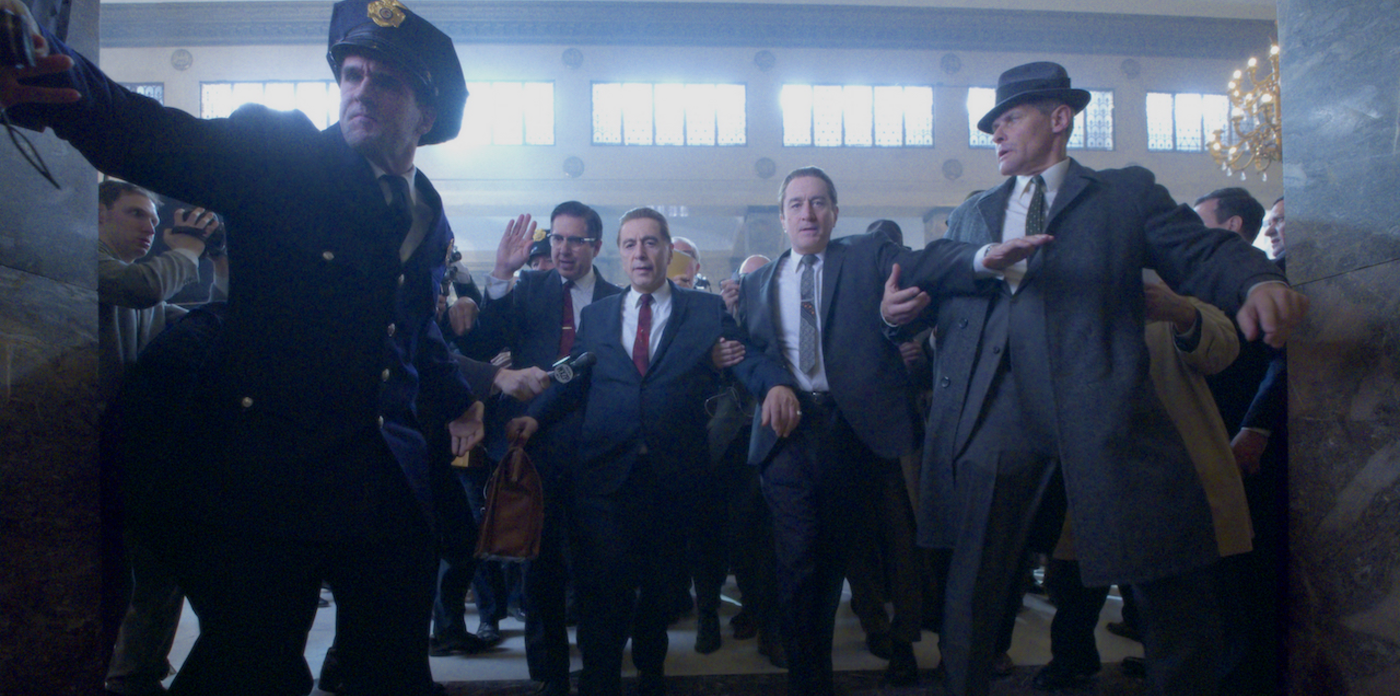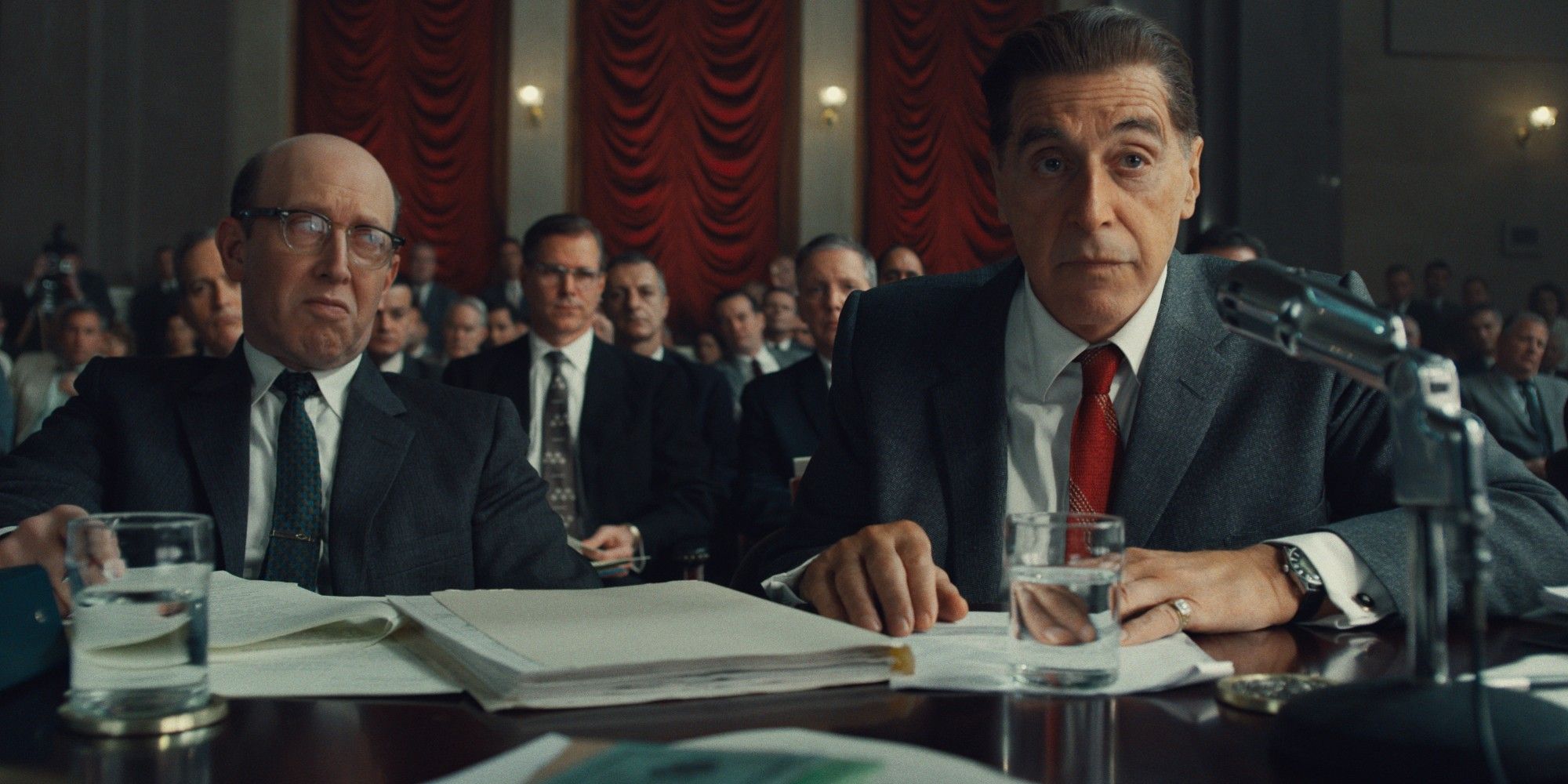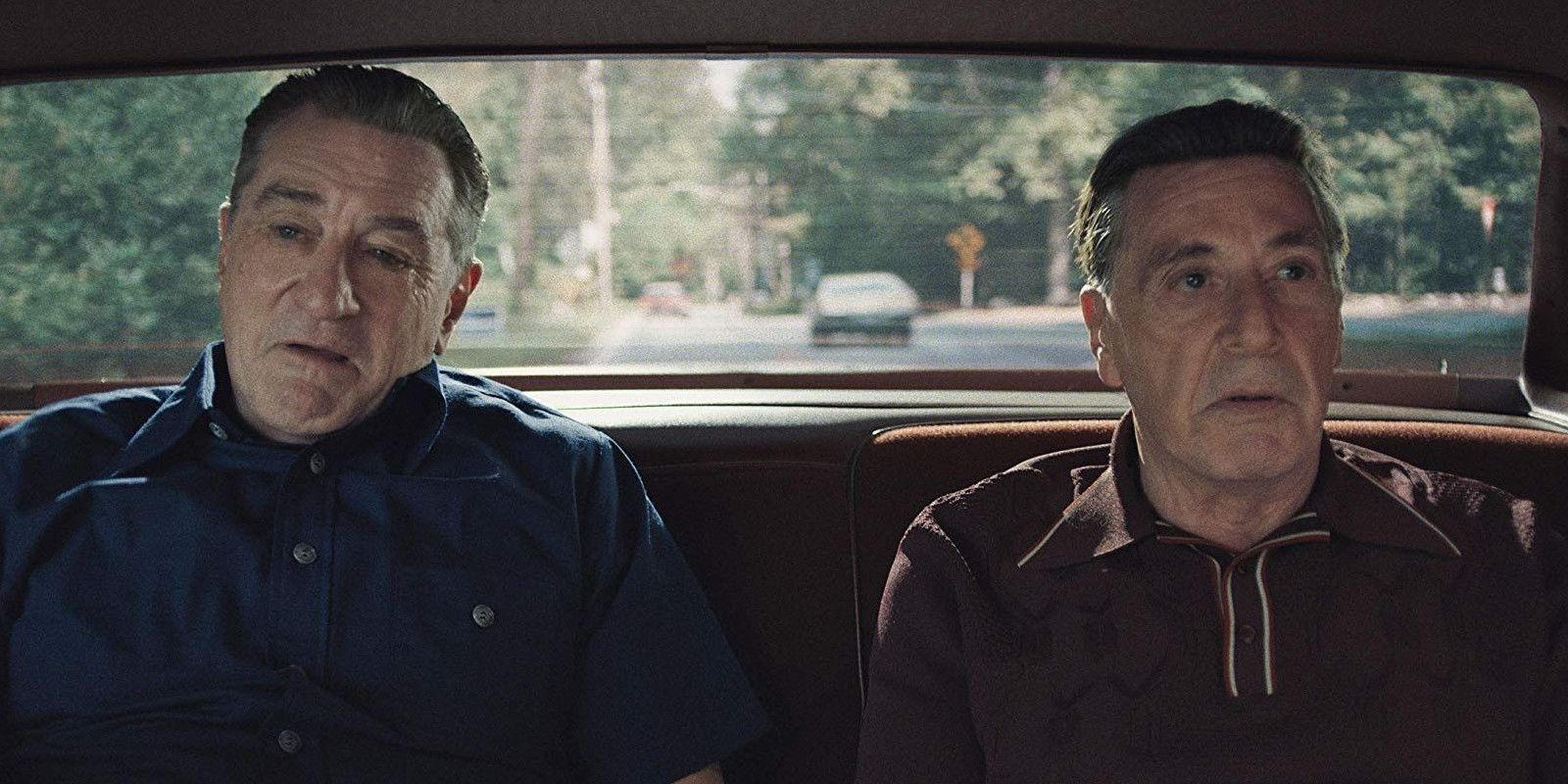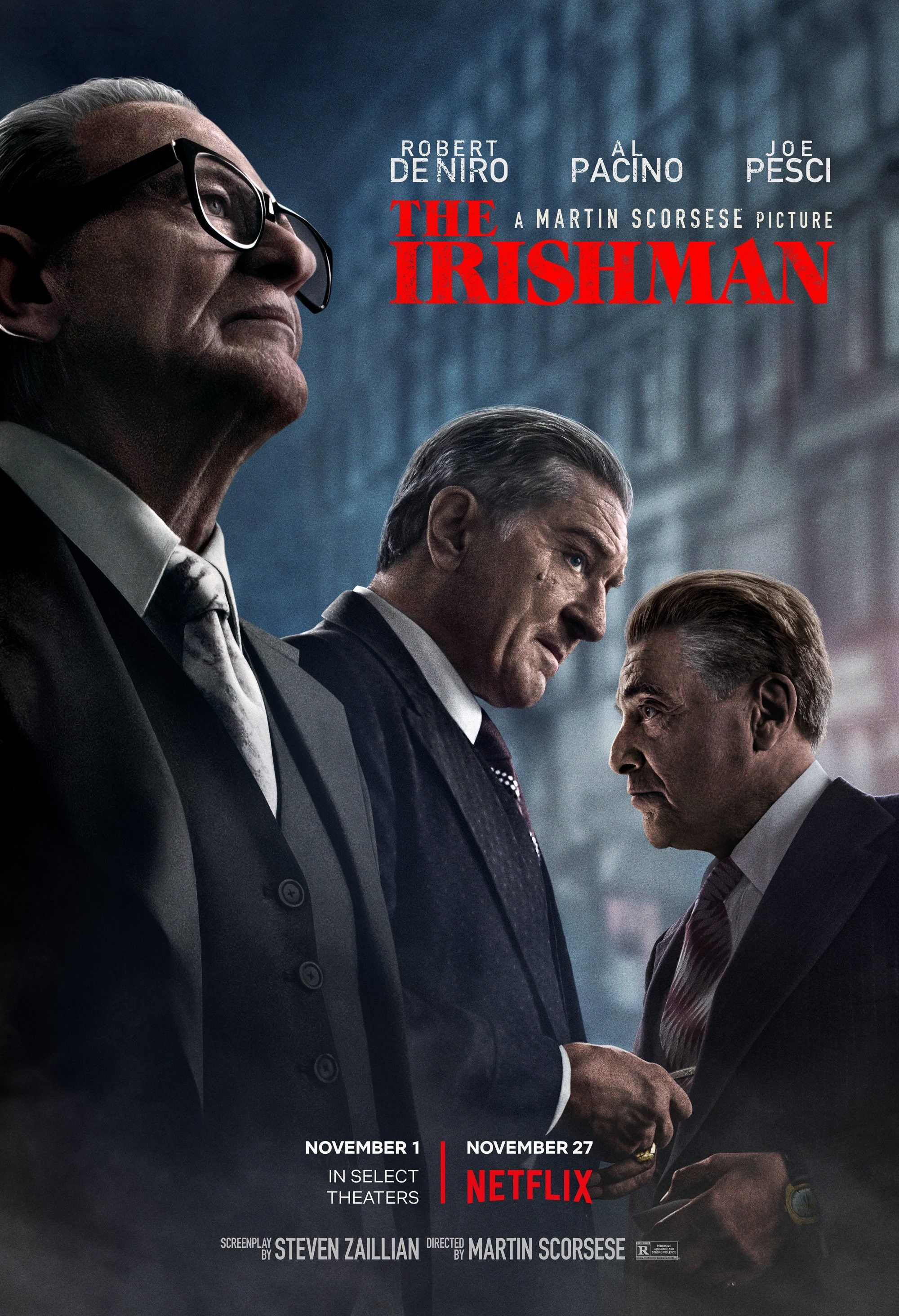Martin Scorsese's latest gangster epic The Irishman spans over six decades, but it leaves quite a bit out about the true story. Told through the recollections of ailing mobster Frank Sheeran (Robert De Niro), the film glides from the war-torn forests of Europe through the frights of the Cuban Missile Crisis and the confusion of the Kennedy assassination before finally landing on the new millenium. De Niro headlines a stockpiled cast for The Irishman, which also includes Scorsese veterans Joe Pesci and Harvey Keitel, Scorsese newcomer Al Pacino, and Ray Romano, Jesse Plemons, and Anna Paquin.
Based on Charles Brandt's 2004 book I Heard You Paint Houses: Frank "The Irishman" Sheeran and Closing the Case on Jimmy Hoffa, Scorsese's film relays information from the real Sheeran and projects them on the big screen, seemingly closing the case on a variety of the country's culprit-less crime. One of which is the butchering of New York gangster "Crazy" Joe Gallo, but The Irishman's main attraction is Sheeran's supposed participation in the disappearance of former Teamsters President Jimmy Hoffa (Pacino).
In the wake of The Irishman's release, however, historians have been quick to snub Sheeran's self-promoting involvement in some of America's most infamous mobster moments – and especially his claims concerning Hoffa. But given that The Irishman also covers a very extensive timeline (albeit with its own very extensive runtime), some details of the characters' lives surely slipped through the cracks.
What The Irishman Leaves Out About Frank Sheeran
As portrayed in The Irishman, Frank Sheeran's life was not always dictated by the whims of the mafia. At the age of 21, Sheeran enlisted in the U.S. Army and remarkably served over 400 days – almost four times the average amount. When he was finally discharged in 1945, he returned to Philadelphia and became a truck driver, where financial and legal troubles – despite what De Niro tells the mafia's lawyer (Romano), Sheeran beat up two men "on the job" – soon brought him to the company of mob bosses Russell Bufalino (Pesci) and Angelo Bruno (Keitel).
As seen in the film, Sheeran began working as a muscle member of the mafia, a profession his brutal army career and side-hustles with local loan sharks had prepared him for. And for the bulk of Frank's life, The Irishman does him right – that is, until it comes to Hoffa's execution. The Irish mobster had indeed become close friends with the leading labor union figure, similarly acting as the muscle for Hoffa and the International Brotherhood of Teamsters. Despite this friendship and The Irishman's own presentation of the events, the real Sheeran claims that when the higher-ups issued the order to get rid of his mentor, he "felt nothing". This may have been a case of bulking up for the camera – countering the guilt and sadness personified by De Niro towards the end of the film – but it could very well be true.
What The Irishman Leaves Out About Jimmy Hoffa & Teamsters
Because The Irishman is ultimately Frank's tale, Jimmy Hoffa doesn't appear until almost an hour into the film – and not only that, but a great deal of his life, other than the fact the he has earned the respect of countless, hard-working Americans like Frank, is similarly abandoned. But the sixty-odd years of Hoffa's life before his destiny-making disappearance were filled by patronage and dedication.
Born in 1913 in Brazil, Indiana, Hoffa's first claim to the worker-man's cause came at a very young age; he was only seven years old when his father, a coal-miner, died of work-related lung cancer. At the age of 19, having abandoned his formal education in ninth grade, he quickly jumped into the labor force himself as a warehouseman for Kroger grocery stores. After experiencing tiresome conditions and the unfair treatment of his fellow employees firsthand, he led his first strike against the company – it's almost needless to say that it was successful. His apparitions and aspirations quickly caught the attention of the International Brotherhood of Teamsters, the labor union Hoffa would later magnetize and multiply. Officially joining in 1933, it only took him four years to become the elected President of the Local 299 in Detroit, where Hoffa's first interactions with the mob began.
Through his ex-girlfriend, Sylvia Pagano, Hoffa came in contact with Detroit gangster Frank Coppola, seemingly at the perfect time. Along with other North American, Depression-era mobsters, including Lucky Luciano and Frank Costello, Coppola helped establish the National Crime Syndicate, a governing body with its own "laws" that would perfectly fit alongside the Teamsters' efforts. Together, the Local 299 and the mob were able to drive out the CIO-backed drivers' union out of the city. Despite these connections, however, Hoffa was regarded as an admirable negotiator by friends and foes alike. Though he wielded a great deal of power, at the bargaining table (a characteristic part of Hoffa's job never seen in The Irishman), Hoffa always sought an agreement, never stretching farther than what he considered to be an outrageous demand.
Though Al Pacino and Scorsese present the natural rapport Hoffa had with working class, blue-collar employees, The Irishman didn't explore how flamboyant a tool that was. The Union leader's popularity only continued to grow throughout World War II, and by the time the conflict overseas was over, and a fresh crop of young men were preparing to join the workforce, Hoffa had earned a position as a Trustee on the Teamsters' General Executive Board. From there, it only took ten years for Hoffa to be elected the union's General President in 1957.
Hoffa, whose term oversaw the contracts of over 2 million workers (almost twice as many as the Teamsters reported to have in 2013), was a celebrated icon among the middle class and his fellow leaders – so much so, in fact, that when Hoffa was outed by Robert Kennedy for having ties with the mafia, his flagrant association with crime organizations only strengthened his position as a fearless, tough-nosed hero of the every-man. Given the fact that labor unions' role in society has greatly diminished since the 1950s, it's easy to dismiss the power which Hoffa and the Teamsters were capable of generating – that same Kennedy even said that behind his presidential brother, Hoffa was the second most influential man in the country – but with long-established mafia muscle behind them, there was a whole lot the Teamsters' could do.
What The Irishman Leaves Out About Hoffa's Disappearance
The climax of The Irishman takes the form of realizing Jimmy Hoffa's disappearance – a crime which, for nearly half a century, has gone unsolved. That being said, the succession of the events are accurate to Sheeran's recollections. What the film does not touch on, however, are the two other hitmen who said that they were the ones who got rid of the Union bigwig. In 1982, Charles Allen testified in front of a congressional committee that Hoffa had been killed, dismembered, and left to rot in the Florida Everglades. Not even a decade later, mobster "Tony the Greek" Frankos suggested perhaps the myth's most popular ending: Hoffa was buried beneath Giants Stadium in East Rutherford, New Jersey.
As the end of The Irishman makes clear, the trail for Hoffa's killer started to run cold as the chief suspects of the case were primarily dead. That being said, it picked up some steam in 2001 when a hair found in a car used by Chuckie O'Brien (Sylvia Pagano's son) matched Hoffa's DNA. That trail quickly went cold as well. A couple years later, Brandt's book hit the shelves, and launched another extensive investigation of the places pointed to by the real Frank Sheeran. Despite some promising leads, including what appeared to be bloodstains, no apt conclusions were made. Since then, various tips and assumptions have sprung up along the news-tables – including one particularly gruesome account which claimed Hoffa had been buried in a 55-gallon drum at a toxic dump site – but again, no confirmed fate has been determined.

